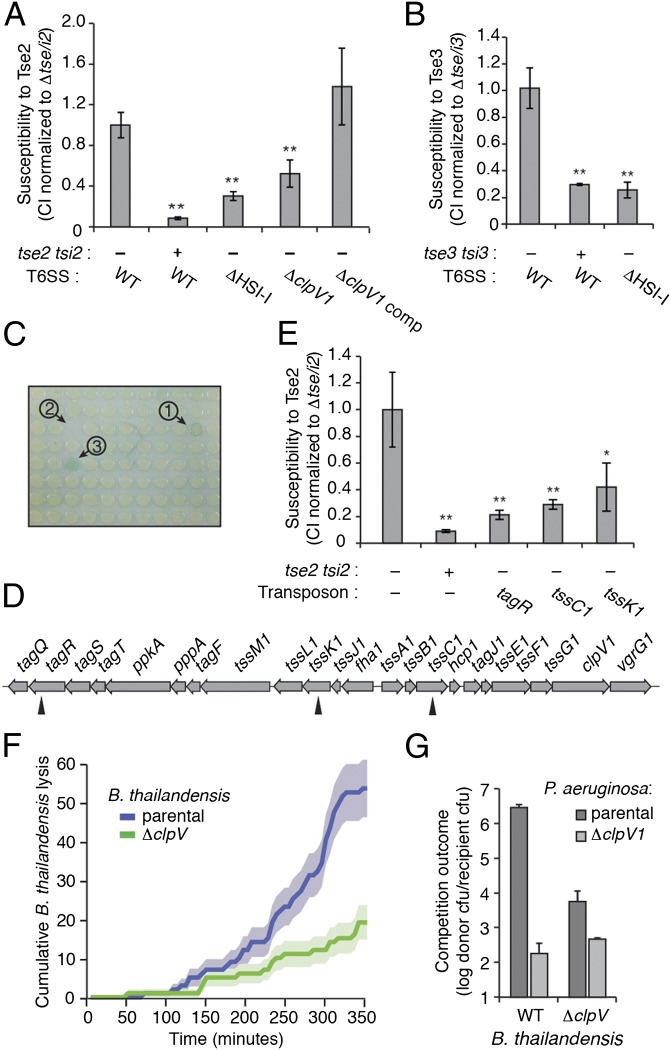Fig. 5.
Efficient intoxication by the T6SS requires a functional T6S apparatus in recipient cells. (A and B) Outcome of growth competition experiments between the parental and P. aeruginosa recipient strains. The presence (+) or absence (–) of tse2 tsi2 (A) and tse3 tsi3 (B) in the recipient strain and the genetic status of the H1-T6SS cluster (WT, wild-type) are indicated. Fitness differences were not observed in control experiments performed under T6S nonconducive conditions (Fig. S4). Competitive index (CI) is defined as the change (final/initial) in ratio of donor and recipient colony-forming units normalized to the susceptible control (A, ∆tse/i2; B, ∆tse/i3). (C) Representative 96-well plate used in screen for H1-T6SS resistance. Each plate contained a positive control (1) and a no-growth control (2). This plate also includes a positive hit (3). (D) Schematic of the H1-T6SS gene cluster with identified Tn insertion sites indicated (arrowheads). A complete list of mutants is provided in Table S1. (E) Outcome of growth competition experiments between the parental and indicated P. aeruginosa strains normalized as described for A. (F) Frame-by-frame running total of lysis events from a TLFM sequence in which the indicated B. thailandensis strain was cocultured with parental P. aeruginosa. Shading indicates counting error. (G) Outcome of growth competition experiments between the indicated strains. Asterisks mark competition outcomes significantly different from the corresponding effector immunity-deficient strain (*P < 0.05; **P < 0.01). Error bars, ±SD. n = 3.

